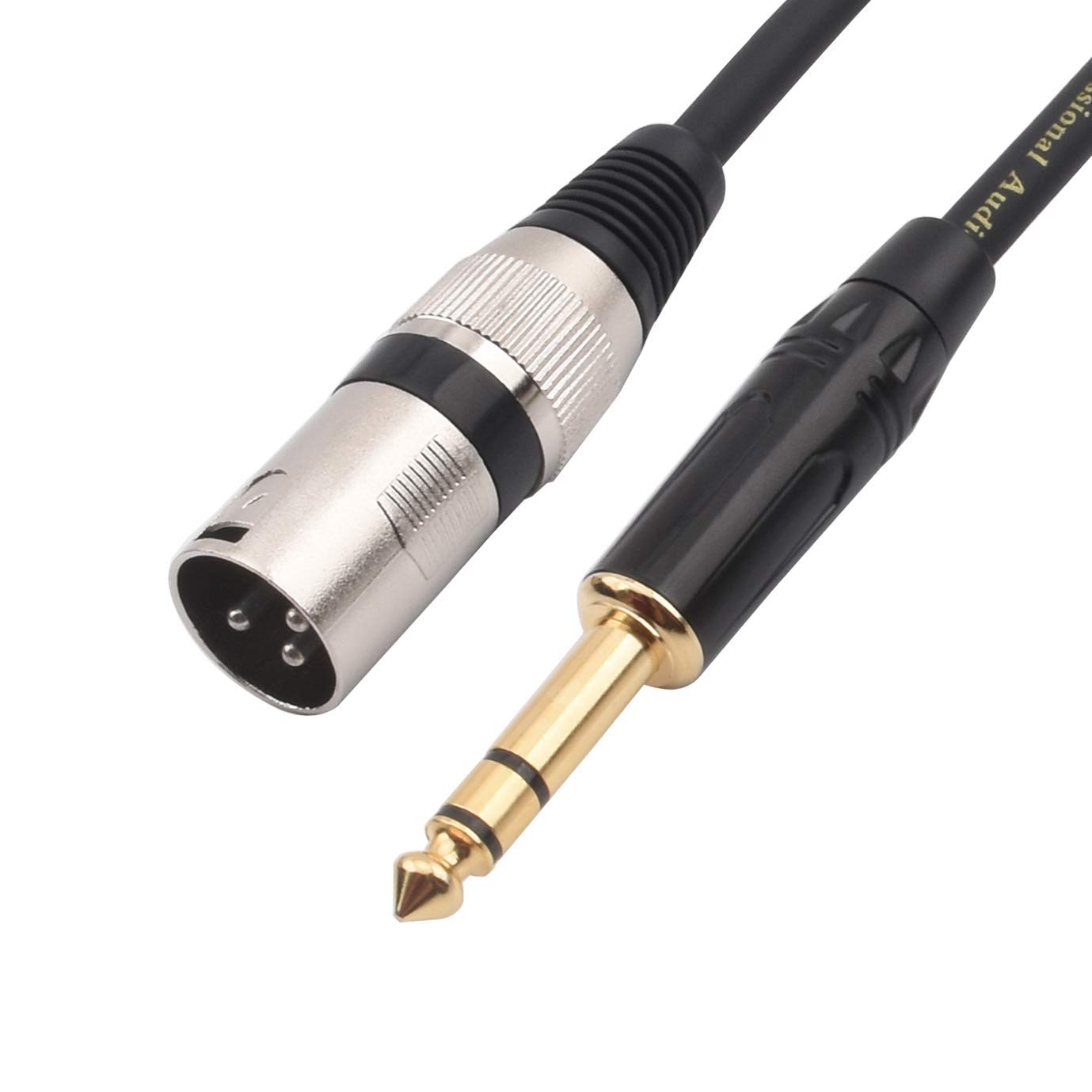About this deal
A TRS cable is an audio cable used to attach audio devices to other devices such as sound cards or amplifiers. The name stands for “tip-ring-sleeve,” which refers to the distinct parts of the cable: the tip, the ring, and the innermost sleeve. XLR cables are typically for professional audio equipment and transmit balanced signals. TRS cables are for consumer audio equipment to transmit unbalanced signals. Can XLR Cables Be Used With Consumer Audio Equipment? Although TRS and XLR don’t differ that much from each other as far as sound quality is concerned, there are many situations when XLR cables are a more favorable choice. Inside this cable are three wires designed to carry the left (or hot) signal, right (or cold) signal, and the ground. TRS cable is great for both mono and stereo signals, which means it is excellent for headphones and other equipment where a balanced connection is preferred. TRS cable is also a safe choice for plugging the equipment into two or more devices. TRRS Cable
Inflexibility. The equipment you are using must be compatible with XLR cable, which means the equipment must be a female port and the connector must be a male port. Most professional music creators and producers prefer XLR over TRS, but there are cases when the latter is a more sensible choice. Both these connectors are common in the audio industry for connecting microphones, headphones, and other audio equipment. Despite their different designs and uses, XLR and TRS connectors have some similarities in terms of sound quality. An unbalanced audio cable comprises two main parts, a ground wire, and a signal. The former acts as the one who delivers audio frequencies, while the latter acts as a reference point and also serves as a shield from outside interferences. And while it does an excellent job of preventing slight hums from street lights and transformers, they also act as an antenna that, ironically, produces noise.
Apart from that, the audio equipment will impact the sound quality. XLR connectors are suitable for professional audio equipment like microphones, mixers, and speakers, while TRS connectors are better for headphones, guitar cables, and other audio equipment. Affordability. If you have a limited budget, TRS is a reasonable choice. The sound quality is not that much different than the more expensive XLR, anyway. And this occurs even when the cable is moved or bumped around. This makes them ideal for professional audio equipment frequently moved and subjected to heavy use. For ordinary people like you and me, spotting differences between balanced and unbalanced cables might be confusing without using tons of technical jargon, but here is an overview of their differences. Balanced audio cables are typically better for longer cable lengths as it provides better protection from outside interference, but unbalanced stereo connections can be a good choice for studios under 10 feet in length as they are cheaper and more accessible. What makes a good cable?
When people say “microphone cable”, they are most likely referring to XLR cable – the standard microphone connector used since the 1950s. XLR connectors transmit balanced mono audio and sometimes stereo signals. It is commonly used to send and receive audio signals between devices. It has a balanced connection that resists noise or any kind of interference. The superiority of TRS vs XLR cable has been a heated discussion for quite some time. While you might think they are interchangeable, they have many fundamental differences in their performance. So, if you are looking for a new cable to hook your audio devices, it is essential to know the benefits and pitfalls of each type. The cable should be compatible with the devices it connects and any other cables or components it may use. This ensures that the cable works properly and efficiently. As already mentioned, the XLR cable is the top choice for microphones, past and present. And it’s difficult to go wrong when you choose something that’s been the choice of many for years and years.Another similarity between these two connectors is their versatility. Both connectors can be for various audio applications. This makes them suitable for a wide range of audio equipment, including microphones, headphones, and more. This article advises you on the best connector between XLR vs TRS cable. So let’s get this debate going! What Is a TRS Cable? Unlike the TRS, the TS (tip-sleeve) unbalanced cable can relay stereo signals in long cables without interference. This allows you to give your fans a great show because you can move freely without worrying about noise distortion in your sound. Types of TRS Connectors Therefore, XLR connectors are for professional audio equipment and are great for long cable runs. Whereas TRS connectors are for many different types of audio equipment and are not as good for long cable runs. The choice between TRS and XLR connectors will depend on your specific audio needs. Sound Quality Comparison of XLR & TRS Connectors TRS connectors are more affordable, easier to use, and more versatile, but they are not as good for long cable runs and are more susceptible to noise and interference.
They are not as good for long cable runs as XLR connectors. They are more susceptible to interference and noise, affecting sound quality. In-Depth Comparison Of XLR & TRS Sound Quality Factors Affecting Sound Quality We recommend using XLR connectors if you have enough space for all of their components (adapter and cable). They provide better audio quality with less interference from outside sources like electromagnetic fields. Is XLR Better Than TRS—Pros and Cons ExplainedBalance. XLR cable is always, always balanced, which means there is less likelihood of noise and interference. This also makes the audio quality superb.
 Great Deal
Great Deal 